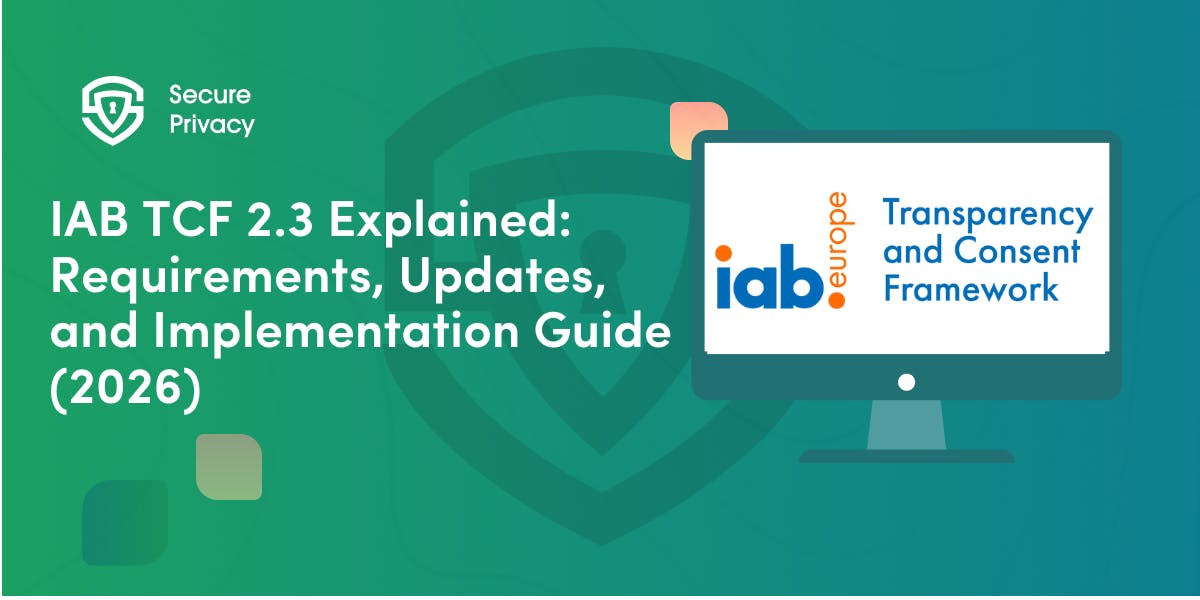Designing Consent in Virtual Spaces: The Critical Challenge of VR/AR Safety
How do we design consent mechanisms that protect users while preserving the immersive experiences that make VR/AR valuable?
As virtual and augmented reality technologies become increasingly integrated into daily life, they bring unprecedented capabilities to collect intimate user data through cameras, microphones, motion sensors, and eye-tracking.
These immersive technologies don't just record our interactions – they capture our physical movements, biometric responses, and even our surroundings, often without our explicit awareness.
This creates a fundamental challenge: how do we design consent mechanisms that protect users while preserving the immersive experiences that make VR/AR valuable? The answer to this question will shape the future of extended reality and determine whether these powerful technologies enhance or compromise user privacy and agency.
The Unique Nature of XR Consent
Extended reality environments present novel challenges compared to traditional digital platforms. When technology is worn on the body and directly mediates perception, the stakes for privacy and consent are dramatically higher.
Unlike conventional websites or applications where consent typically involves clicking buttons or checking boxes, XR environments blur the line between digital and physical existence. A VR headset doesn't just track what content you view—it monitors how your body moves, where your gaze falls, and potentially even your physiological responses to stimuli. This intimate data collection happens continuously and often invisibly as you engage with the virtual world.
Recent research proposes a structured three-step approach to address these challenges:
First, select an appropriate model of consent that acknowledges the continuous nature of XR interactions rather than treating consent as a one-time decision.
Next, design specific XR consent mechanics that support this model through intuitive visual and interactive elements that don't disrupt immersion.
Finally, rigorously assess these mechanics through diverse user studies to ensure they work effectively across different demographics and use cases.
This systematic approach recognizes that consent isn't a one-time checkbox but an ongoing process that must be integrated throughout the XR experience.
Three Approaches to Consent Interface Design
Research has identified several promising approaches to visualizing consent in immersive environments, each with distinct advantages and limitations.
Infrastructure-Locked Interfaces
These embed consent indicators within the virtual environment itself. Studies evaluating AR interfaces for pedestrian-autonomous vehicle interaction found designs like "augmented zebra crossings" and "virtual fences" to be highly intuitive.
The effectiveness of these designs stems from their familiarity – they leverage existing real-world concepts that users already understand. A "virtual fence" that opens when interaction is safe creates an intuitive boundary that clearly communicates permissions without requiring explicit explanation.
For example, in a social VR space, infrastructure-locked interfaces might include clearly marked "recording zones" with visual boundaries showing where user actions might be captured. These environmental cues become part of the world itself rather than overlaid notifications.
Object-Locked Interfaces
Rather than embedding consent in the environment, these interfaces attach indicators directly to interactive elements. Think of visual cues that move with objects requesting access or interaction.
Object-locked approaches create clear visual connections between sources and permissions. A virtual camera might display a glowing outline when recording, or a data-collecting object might show animated icons indicating what information it captures.
While these create clear visual connections between sources and permissions, research shows their dynamic nature can sometimes confuse users, particularly when the indicators change rapidly or compete with other visual elements. The effectiveness of these interfaces depends heavily on thoughtful visual design that remains legible in complex environments.
User-Centered Interfaces
These follow the user's perspective, typically through head-up displays (HUDs) that remain consistently visible regardless of environmental changes. Their primary advantage is persistent visibility – users don't need to search for consent information.
A well-designed user-centered interface might include a subtle privacy dashboard that remains accessible with a quick gesture, displaying current data collection status and active permissions at a glance.
However, they require careful design to avoid becoming obtrusive during extended use. The balance between visibility and disruption becomes critical in long-term XR experiences, as constant notifications can create "consent fatigue" that ultimately undermines their effectiveness.
Principles for Effective Consent Design
Across multiple studies, several key principles emerge for designing intuitive consent mechanics that protect users without disrupting immersion.
Leverage Familiarity
Interfaces incorporating elements from existing contexts consistently score higher in user evaluations. Rather than inventing entirely new metaphors, successful XR consent designs often adapt familiar concepts from physical or digital environments.
For instance, a "privacy bubble" that visualizes personal space in social VR draws on our intuitive understanding of physical proximity and social boundaries. Similarly, using familiar traffic light color schemes (red, yellow, green) to indicate privacy risk levels builds on established visual language.
Implement Redundancy
Effective consent interfaces use multiple communication channels simultaneously rather than relying on a single method. This might include combining color coding, iconography, spatial positioning, and text to ensure users with different perceptual abilities all receive the message.
This redundancy becomes particularly important in immersive environments where users might be focused on other elements of the experience. A consent request that's communicated through multiple sensory channels (visual, auditory, and haptic feedback) is more likely to be noticed and understood.
Maintain Clear Connections
Ensure consent information is visibly connected to the objects or actions it pertains to. When permissions are disconnected from their sources, users struggle to make informed decisions about what they're actually consenting to.
This principle is especially important in complex XR environments where multiple applications or entities might be requesting different types of access simultaneously. Visual links between requesters and permission dialogues help users maintain awareness of exactly what they're agreeing to.
Consider Temporal Dynamics
Design for ongoing consent negotiation rather than one-time agreements, particularly in social XR experiences. Consent needs can evolve throughout an experience as contexts change and new interactions emerge.
Effective systems provide mechanisms for users to modify their consent settings fluidly as they move through virtual spaces or engage in different activities. This might include gesture-based shortcuts for quickly adjusting privacy levels or context-aware systems that suggest appropriate permission changes based on environmental factors.
The most effective designs balance theoretical principles with practical testing. Research shows that even carefully designed interfaces based on ecological interface theory may perform poorly if they don't align with users' intuitive understanding.
The Cross-Reality Challenge
Perhaps the most complex consent scenarios emerge when XR experiences bridge virtual and physical worlds. Dating applications that begin in VR but potentially lead to physical meetings require consent mechanisms that function effectively across this boundary.
Stakeholder research reveals significant concerns about how consent established in virtual environments might be misconstrued as applying to physical encounters. This highlights the need for explicit boundary-setting mechanisms that clearly distinguish between permissions granted in virtual environments versus those extended to physical interactions.
These cross-reality scenarios raise profound questions about consent transfer and contextual boundaries. A user who shares personal information or engages in certain behaviors in VR may not intend for those same permissions to apply in physical meetings. Designing clear demarcation between these contexts becomes crucial for user safety.
The Road Ahead
As XR technologies continue to evolve, several priorities emerge for advancing consent interfaces:
Standardization
Developing XR-specific consent frameworks that address the unique capabilities and risks of immersive technologies will be crucial. Industry-wide standards could establish consistent visual language and interaction patterns that users can learn once and apply across different XR platforms and experiences.
These standards must address the full spectrum of XR data collection, from basic usage metrics to sensitive biometric information like eye-tracking, facial expressions, and physiological responses. Clear categories and consistent visualization approaches would help users make more informed decisions about their data.
Adaptive Systems
Creating consent interfaces that learn user preferences over time could reduce friction while maintaining protection. These might take the form of dedicated virtual assistants that monitor and support boundary maintenance, suggesting appropriate privacy settings based on past choices and current contexts.
Machine learning approaches could help these systems identify patterns in user consent behaviors and proactively suggest appropriate permission levels for new experiences. However, these systems must be designed with transparency to avoid creating new privacy concerns through their operation.
Inclusive Design
Prioritizing flexible frameworks that accommodate diverse user needs while maintaining consistent protection is essential for widespread XR adoption. This includes considerations for users with different abilities, cultural backgrounds, and privacy sensitivities.
Customizable interfaces that allow users to adjust how consent information is presented (visual, auditory, haptic) would ensure accessibility across different user groups. Similarly, consent frameworks must account for varying literacy levels and technological familiarity.
Building Trust in Immersive Experiences
The development of effective consent interfaces represents a critical frontier in creating safe, ethical immersive experiences. As these technologies become increasingly integrated into daily life, balancing comprehensive protection with seamless user experience will determine whether XR enhances or compromises user agency and well-being.
For designers and developers working in this space, the message is clear: consent in XR isn't just about legal compliance – it's fundamental to building trust in technologies that interact with users in unprecedentedly intimate ways. The most successful immersive experiences will be those that empower users with intuitive, effective control over their boundaries and data.
By applying these principles and continuing to refine our approaches to XR consent, we can create virtual spaces that respect user autonomy while delivering on the transformative potential of immersive technologies. The future of XR depends not just on technological innovation, but on ensuring these powerful tools enhance rather than undermine human agency.
Get Started For Free with the
#1 Cookie Consent Platform.
No credit card required

What is Cookie Consent? A Quick 2026-Ready Glance
Your website loads. Cookies track users. But without proper cookie consent, you're violating GDPR — risking fines up to €20 million or 4% of global revenue. Cookie consent is the legally required mechanism by which websites obtain explicit user approval before deploying non-essential tracking technologies. This requirement stems from GDPR Article 4(11) and the ePrivacy Directive, mandating that consent must be freely given, specific, informed, and unambiguous.
- Legal & News

DSAR Tools Explained: Best Software for Automating Privacy Requests
You're drowning in data subject access requests. Manual searches through dozens of systems miss regulatory deadlines and expose organizations to fines starting at $2,500 per violation. The solution? DSAR tools — purpose-built software that automates the entire process of responding to data subject access requests, from intake to delivery.
- Legal & News

IAB TCF 2.3 Explained: Requirements, Updates, and Implementation Guide (2026)
Your ad revenue dropped 40% overnight. Google stopped bidding on your inventory. Your DSP partners flagged your traffic as non-compliant. The culprit? An outdated TCF 2.2 consent string after the February 2026 enforcement deadline.
- Legal & News
- Cookie Consent

